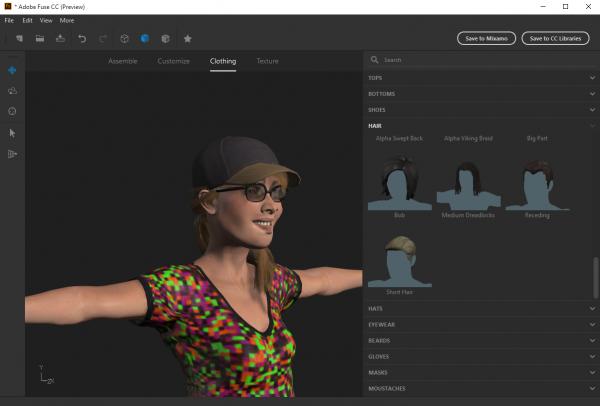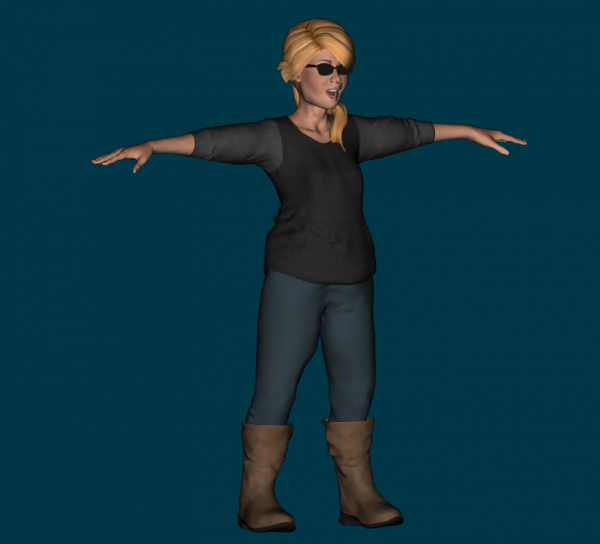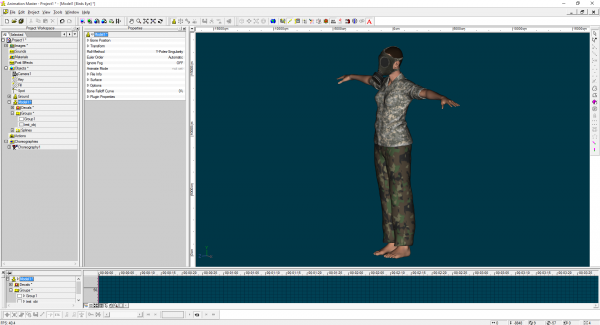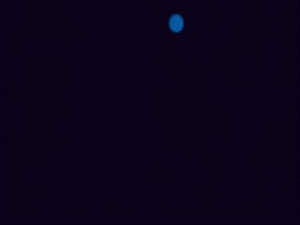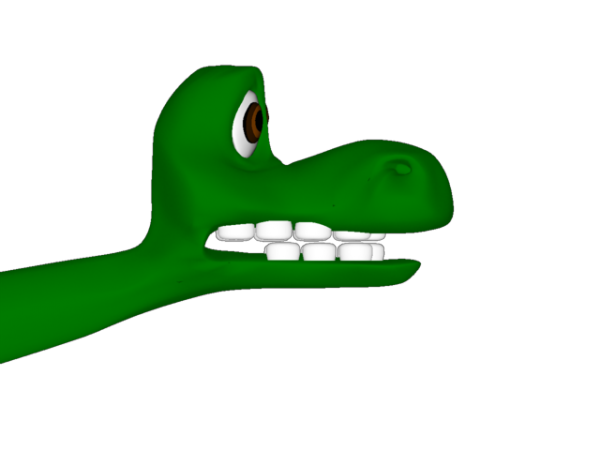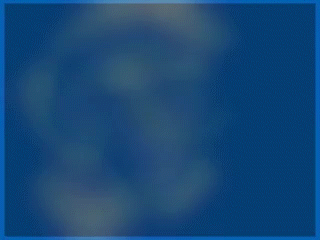-
Posts
21,649 -
Joined
-
Last visited
-
Days Won
119
Content Type
Profiles
Forums
Events
Everything posted by Rodney
-

playing with amplitude and rough model idea
Rodney replied to johnl3d's topic in Tinkering Gnome's Workshop
H,264 is a going codec these days. I (just now) downloaded and used Handbrake to convert your AVI to that codec and then it even played in Quicktime. If you use Handbrake note that when I first tried to get it to see the AVI file it seemed like that format wasn't recognized. I used * to see it in the open dialogue and then it converted it fine. I haven't used the feature but it appears that Handbrake can monitor a folder and convert files that appear therein on the fly. It may just be wish fulfillment on my part but theoretically that'd mean that we'd render (in AVI) to a folder monitored by Handbrake and automagically get the converted (MP4) file. I see there is a command line version of Handbrake also and that could be automated via batch file. Bottom line: I know that short of using the 32bit version of A:M to render/convert to .MOV we don't have a lot of native options at this point but AVI isn't a particularly good online format. Don't forget that you can run 32bit A:M in 64bit Windows (Win 10 or otherwise). -

playing with amplitude and rough model idea
Rodney replied to johnl3d's topic in Tinkering Gnome's Workshop
While I could see the preview image with Quicktime only the sound would play. In the end I had to open the AVI with VideoLAN (VLC). -
Interesting... In two days their new campaign has taken in more than the total amount for their entire Kickstarter... and they are over half way to their goal with 44 days remaining. I'd say that the press and initial interest from the Kickstarter jumpstarted the new campaign. Perhaps someone needs to start a 'Jumpstarter' site just to get the word out -before- folks launch a campaign? One oddity... Don and Gary appear to still be posting on the Kickstarter which makes me wonder about the rules o' the fundraising game. Do the folks at Kickstarter care? There are a lot of movng parts in any fundraising effort and while the initial fundraiser did get some decent coverage it did seem to have a few things working against it. One of which was that its final days fell smack dab in the middle of the Thanskgiving week where folks were busy with other things (to include saving their money for Black Friday sales?) At any rate, the jury is still out on whether the campaign will be successful but at the current rate of funding I'd say Don and Gary will hit their goal this time around.
-

playing with amplitude and rough model idea
Rodney replied to johnl3d's topic in Tinkering Gnome's Workshop
Nice one John. Almost looks like a singing volcano. -
My sympathies to you. But look at the bright side! At least you were good at algebra once! My daughters knew me well enough to bypass me where it came to math.
-
For those interested... Don and Gary halted their Kickstarter just prior to it failing to meet it's goal and moved the entire endeavor over to Indiegogo. Will they be more successful? Hard to say. They are currently at 20% of funding 6 hours in with 617 backers and 45 days to go. https://www.indiegogo.com/projects/dragon-s-lair-returns/x/9070129#/
-
It doesn't surprise me that info would have changed. It is proof positive that due to the rate of change/innovation in a digital environment as soon as documentation is written it is already outdated. While I often get information wrong... very likely more often than I get it right... one thing I try to do is look at trajectories. Often these trajectories have hints of what will work in short term only. This usually includes pricing and quantities as those are competitive vantage points that can change very quickly. This is not unlike when we use absolutes in are projections, "I will NEVER do THAT again." That's a bit like saying, "Wait a second and watch me make that mistake again." While I don't care for a lot of Adobe's approach it is clear they have gone all in regarding their commitment to subscription service. As such they keep trying to make it a more valuable service with every iteration. They won't get it right every time but odds are they'll get enough right to remain in business.
-
Concerning mesh alignments for use with Fuse the following is an example of what I mean by the software relying on UV settings rather than mesh/geometry:
-
Nicely done Matt. MMMMmmmmmmm,,,,, need pizza.
-
Nancy, As for getting meshing into Fuse, it appears that there is a Import Wizard that helps guide through the steps to create a Fuse Character. The resulting character is then modular and therefore can be customized via the standard Fuse sliders. Several companies seem to have embraced some technology used in Substance Painter. Fuse appears to use this approach with procedural texturing for it textures. Specifically, Fuse allow importing of Substance files (which I assume to be the same as that used by Substance Painter). Hmmm... procedural textures... I wonder what other programs use such things. Disclaimer: I cannot confirm or deny, the only link between Substance Painter and Fuse's substance texture files may be the word 'substance'. Update: I have confirmation that Adobe Fuse uses Allegorithmic Substance Painter textures.
-
Haven't had it long enough to investigate properly. I do see a bunch of cartoony charcters on Mixamo so those files are getting there somehow... perhaps directly into Mixamo bypassing Fuse altogether. As I see it Fuse is primarily a use of technology Adobe obtained when they purchased Mixamo (and whatever other companies are represented). This is a lot like any of us sitting around dreaming up things we can create with the tools we have available just with a whole lot more money being exchanged. .
-
The short answer appears to be 'yes'. While things could change I did read that subscribing to Adobe CC grants access to Mixamo although I can't imagine it's 'all-you-can-eat' that does appear to be an option because Adobe wants folks to contribute. Somewhere else there is a post that outlines their original plan athough who know to what extent that may have changed. It's been awhile but that other post scratched the surface on this. As long as the model is OBJ (or FBX?) the autorigger will work. Much of the connectivity has to do with new approaches to using UV data. This is similar in some ways to Marvelous Designers use of UV data to solve mesh connectivity. Disney has borrowed some of that same technology (UV driven meshes) of late and the way they appear to be doing it is interesting. It'd be a bit like us being able to lay down splines (or perhaps more appropriately stated... patches) in A:M's Decal Editor. The splines/patches would then appear textured in the modeling windows ready for final retopology. It's a bit over my head but there are some Disney tech documents that go into some detail. The short answer is 'yes' here too. We can deduce this if for no other reason that Adobe Fuse can be used as the middleman software to get any OBJ mesh through to Mixamo.
-
I think 'animating in Photoshop' is definitely a stretch where it comes to our understanding of the word animate. The video that outilnes the procedure basically allows animation in Photoshop but as a means to find an ideal frame from that sequence and then use that (still) frame in an image. That isn't to say the process won't be useful... heck, lots of talented A:M Users have made a name for themselves creating still imagery rather than animation. Regarding Flash: I missed the word on Flash. Hmmmm.... changing the name from Flash to Adobe Animate isn't quite pulling the plug... I'll have to look into that, learn what there is to learn and get myself up to date. I've used Flash for little projects here and there but never warmed up to the workflow. Added: I'd say that any time an application is rewritten from the ground up some major changes will have to take place. It sounds to me like that is exactly what is happening with Flash. From my limited view it appears that some of the fringe applications Adobe brought to market (Edge Animate, etc.) formed parts (modules) for bringing Flash to it's current stage; moving more fully into HTML5 etc. I'm sure a lot of plugin technology was/is incorporated as well. Of course, the major move Adobe has been making is toward being a content provider where they get money by being at the crossroad where the transaction of digital goods and services are made. In the end, this move of Flash to Animate CC may save the day for Robert's legacy assets, especially if Adobe were to free up some of the resources from earlier versions of the Flash software.
-
Oh yeah. Make full use of that time and any resources they supply there! Even if not of any particular use (to me) some of these things may be of use to someone else and so it's good to at least have some cursory understanding of what is there if ever needed.
-
According to the last blurb on the attached write-up everyone should be able to import designs of their own (made with A:M) into Fuse to further customize and outfit characters. The meshes created with Fuse aren't optimal for use with A:M but can provide a good starting point even if only for assisting with design. A plus is that the meshes consist of quads (unless sprecifically set to export tris). Commercial usage? According to Adobe: For more info check out the site: https://www.adobe.com/products/fuse.html
-
And here's a shot from the general UI. Adjusting the parameters (via sliders) will be very familiar to A:M Users. Note that when updating a setting it can take a few moments for the program to update the other features. For instance in this shot, after adding the hat it looked like the hair wasn't going to change but after a little while it reformed (mostly) under the hat. I did notice that when adjusting the teeth that wasn't always the case although perhaps I just didn't wait long enough for the change to sink in.
-
-
Yep... time again to cover some Adobe news that intersects with our interests... Abobe has released the preview of Fuse which we've seen before under a different name. As part of Adobe CC, if you subscribe to that you get Fuse thrown in to the mix. What is Fuse? Fuse is a bipedal (human) mesh generator that has many custom sliders that allow for modification of the mesh. It's primary purposes is to send the mesh off to Mixamo or to Photoshop CC where it can be articulated/animated. Fuse does also allow export to .OBJ format which is useful for A:M Users. While the mesh is dense for the humans the acouterments/clothing are reasonable. Perhaps best yet the whole mix comes into A:M with textures intact. The interest for most will be how Fuse generates characters that can be plopped into Photoshop, posed, animated, etc. Of interest to me personally is how customizable/hackable the originating mesh might be for creating more cartoony type bipeds as well as for adding props and clothing to the collection. The latter I assume is going to be a major player for Adobe as they have stated they are encouraging folks to share their creations but have said rights to those creations will remain with the creators. If nothing else the creations made with Fuse may be uesful for study of how standardized decals can be set to cover a wide variety of human characters. And I suppose best of all, for those that are already subscribed to Adobe CC, Fuse is part of the subscription so you can start using it today. Here's a quick (and very random) two minute creation:
-
Here's a rendering of Serg's action (from the project) which by itself is pretty neat. Here again I've added a little color tinting (blue) and blur. The primary thing the flocking in the project does is duplicate this object's actions. Note that the diagonal line artifact in thisone isn't from Serg's project but is that old glitch that tends to appear when rendering with patch images (esp. PNG?). I applied the original action rendered out via Action to a patch that I then tinted blue via ambiance color and rendered again. In hindsight I think I should have tinted this guy orange so he'd look like a goldfish...
-
For those that are technically inclinded (i.e. usually not me) Pixar has published a paper from their 'history of technology' presentation at SIGGRAPH 2015. For those so inclined there is a lengthy section on Open Subdiv. The paper can be found here: http://graphics.pixar.com/library/SigAsia2015/paper.pdf This is the course notes from the presentation. I assume there is a video that goes with this presentation as well but I haven't seen it yet made available.
-
Flocking is particle based but unlike regular particles flocking uses a model that is referenced by each particle. The flock types are Crowd, Swarm and Bird which each set a general flocking pattern. Serg uses the Crowd type in his project. Tip: The number one reason why folks have problems with Flocking is that they forget to make sure Particles is toggled to 'On'. Tip2: During setup of flocks it is often useful to set the display setting to draw single dots instead of the models. Drawing a lot of models onscreen can considerably slow a system down. Once everything is placed and animated then save... and set the Draw As Dots setting to 'Off'. Added: I should have said that in Serg's project the key appears to be the Action he has created that is then applied to the Flock. It is that Action which does the bulk of the magic. I assume that is the 'smart' that drives the 'smart flocking'. Besides Serg's general skill at putting together projects like this of course.
-
I've been thinking about this movie quite a bit since seeing it and it amazes me how deceptively simple Pixar makes the film look. It's one of those things where you consider even a simple scene and begin to realize just how difficult/complex completing even a single shot would be (i.e. modeling, animating, texturing... everything). The other day I started doodling an image of Arlo... thinking, 'Just how hard could it be'... and a few hours later I still hadn't produced anything. Here's about the only image I thought was worth sharing out of the whole endeavor. *Almost* makes me wanna go back to drawing with pencil and paper as a similar outcome surely would have taken just a few minutes (he says with supreme overconfidence). At least I'll know a bit more about the approach to take should I attempt to model Arlo again. In other thoughts: It's interesting to see the difference in character from the early promotional material and final characters as seen on the screen. It's pretty clear the design was refined to invoke a younger perspective. Specifically making the characters younger (from mid to late teen to ten/eleven). I think the final age serves the story well. One thing I think might be lacking is that of introducing more characters that only make brief appearances (i.e. perhaps just a hint of a neighbor or two who farm in the general vicinity of Arlo's family. I understand the need to keep the story itself as simple and focused as possible but Disney/Pixar could definitely capitalize on that (young kids... especially boys as they are really into dinosaurs at an early age and it'd be good for them to see and recognize... or at least guess about... those neighbors). Perhaps they will explore that in related commercial endeavors. I do understand the sense of keeping the perspective small (family is everything to a young child) but even a highly sheltered child living far away in the wilderness is exposed to folks living in the greater community. Even if it was that strange old dinosaur that lives in the shack down the road that seasonally might warn, "You papa live close to de riveeer." "Me papa say doooon't live close to dat riveeeer."
-
Nicely done Serg! The recent commentary on clouds made me wonder what adding a little transparency and blur to your smartflocking might produce,,,
-
Yes, softer shadows and some sort of AO would be optimal. I don't really understand why you'd run the A:M render without when all the others have it on unless its to say you get something equivalent without.
-
Whoa... Thanks Luis! You just made my day. I'm loving the lighting setup you have in that project too. Thanks for the BB8 model!











